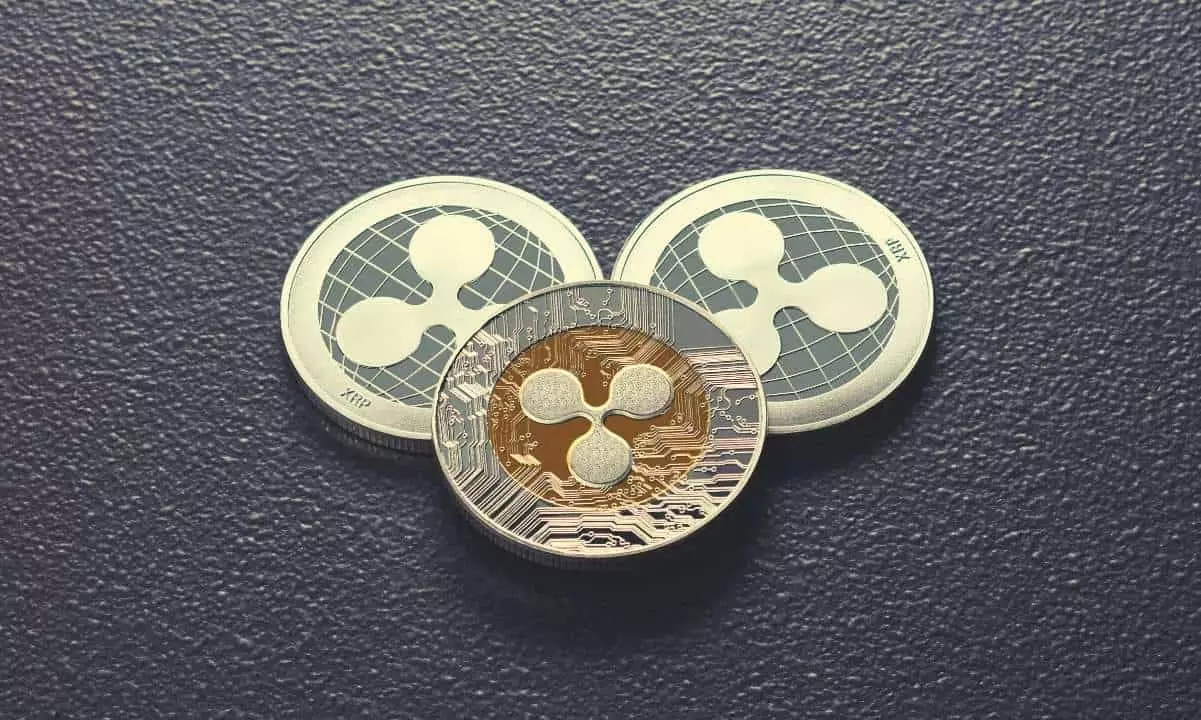The introduction of futures contracts for cryptocurrencies like XRP on regulated trading platforms, such as the Chicago Mercantile Exchange (CME), is often heralded as a milestone event, indicative of institutional acceptance and evolving market dynamics. Yet the first day’s trading volume can often serve as a critical barometer for gauging investor sentiment, liquidity, and overall appetite for this digital asset. The lukewarm reception of XRP futures—a mere $19 million in total volume—speaks volumes about the current market landscape and investor assurance.
XRP futures becoming available alongside established titans like Bitcoin and Ethereum inevitably invites comparisons that may not favor the new entrant. On its launch day, XRP futures barely gained traction, significantly trailing Bitcoin’s monumental debut that eclipsed $100 million in its first day of trading. Ethereum’s launch, although slower than Bitcoin’s, still pulled in over $34 million, placing XRP’s performance in stark relief against the benchmarks of its predecessors.
Regulatory Clouds and Hesitant Investors
One of the most significant dynamics impacting XRP’s futures launch is the regulatory uncertainty that hangs over the asset like a dark cloud. XRP’s ongoing legal tussle with the U.S. Securities and Exchange Commission (SEC) has cast a long shadow over investor confidence. The rejection of a proposed settlement in which Ripple Labs sought closure with the SEC only underscores the unresolved legal framework surrounding XRP.
Investors are naturally skittish in the face of such ambiguity. When futures for Bitcoin and Ethereum launched, they were riding a wave of bullish sentiment backed by growing institutional interest. In sharp contrast, XRP is emerging in a market desperately seeking direction, laden with variables that could pivot dramatically in regulatory corridors. Such uncertainty makes institutional and retail investors alike hesitate, opting for crypto assets that promise more clarity and stability.
Market Maturity: A Double-Edged Sword
Another crucial factor that differentiates XRP’s futures launch from its counterparts is the maturity of the cryptocurrency market itself. When CME rolled out Bitcoin futures in December 2017, it did so amidst a fervent bull market characterized by an influx of media coverage and retail excitement. The entire environment provided fertile ground for trading activity, as Bitcoin was not just a buzzword, but a phenomenon.
In contrast, XRP’s introduction occurs within a market that is trying to stabilize after a tumultuous period of price fluctuations and sentiment swings. Additionally, the market has evolved to become more saturated with various crypto derivatives available on platforms like Binance and Coinbase, which provides consumers with more options but also fragments liquidity and interest.
Contract Specification and Market Saturation
The specifications of contracts also merit analysis. CME’s Bitcoin and Ethereum futures were launched at a time extraordinarily advantageous to those assets; their unique characteristics and timing helped concentrate trading volume on CME’s platform. XRP’s comparable futures, however, face intrinsic hurdles. With established alternatives already populating the market, investors might gravitate toward platforms they already trust rather than experimenting with a new product.
For instance, CME’s XRP futures include a standard contract representing 50,000 tokens and a micro contract covering 2,500 XRP. While the varied contract sizes aim to attract different tiers of investors, they are not sufficient to drown out pre-existing competition. With established options outside of CME showing superior volume, XRP’s futures product struggles to carve out a niche.
Investor Behavior and Decision-Making Paradigms
At the end of the day, human psychology plays a pivotal role in cryptocurrency trading. When faced with uncertainty, investors often resort to established trends or assets that offer a clearer path to returns. The current environment surrounding XRP, laden with regulatory tensions and market saturation, encourages a risk-averse mindset rather than the adventurous spirit required to engage in new futures trading.
Thus, the underwhelming launch of XRP futures not only signifies challenges that Ripple Labs must navigate but also raises questions about the broader health of the cryptocurrency landscape. The distinction in trading volume compared to Bitcoin and Ethereum signals a market at a crossroads, grappling with conflicting desires for innovation and stability. Therefore, while the futures market is a crucial next step for XRP, its lukewarm debut could herald challenges that extend well beyond the trading floor.

